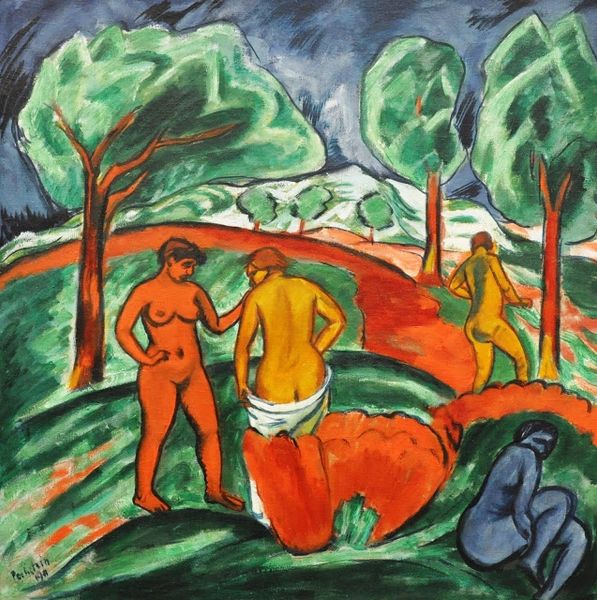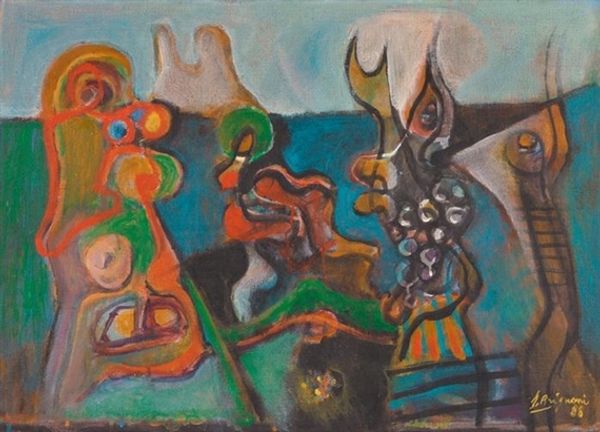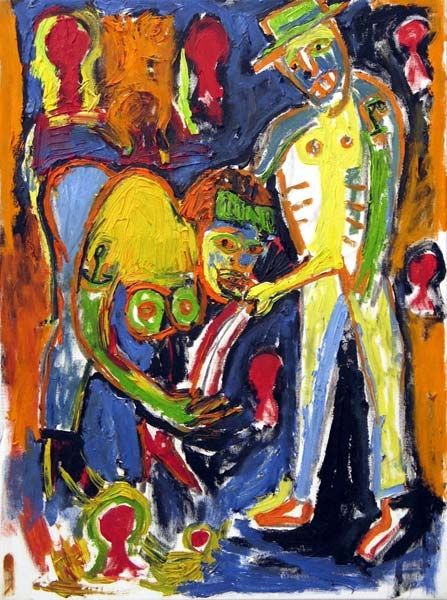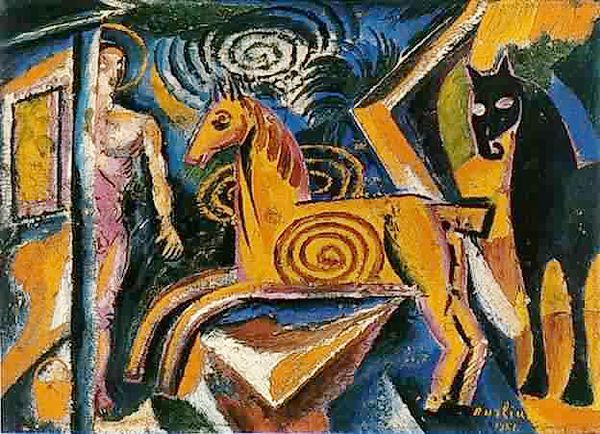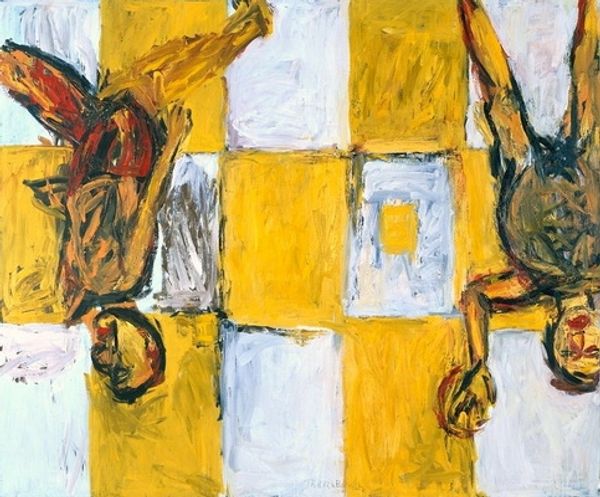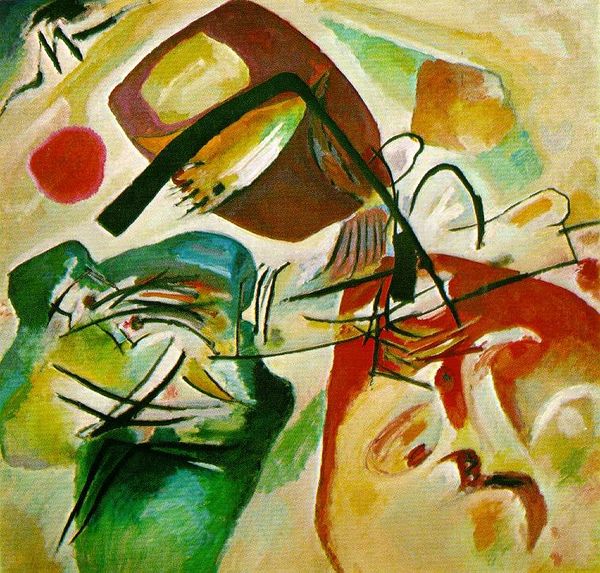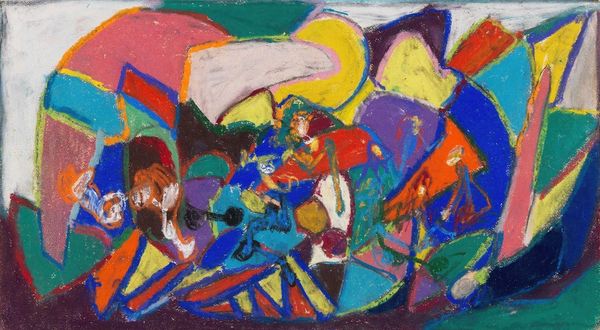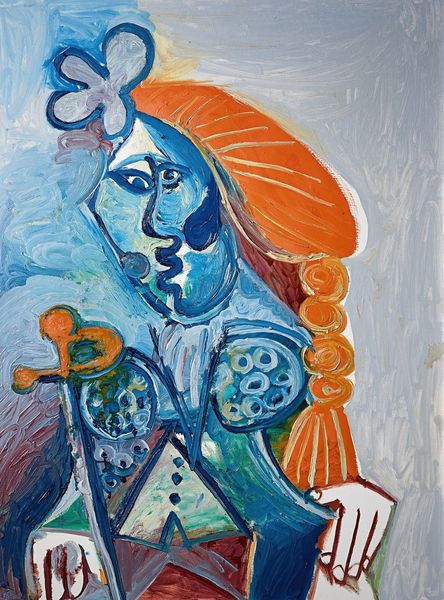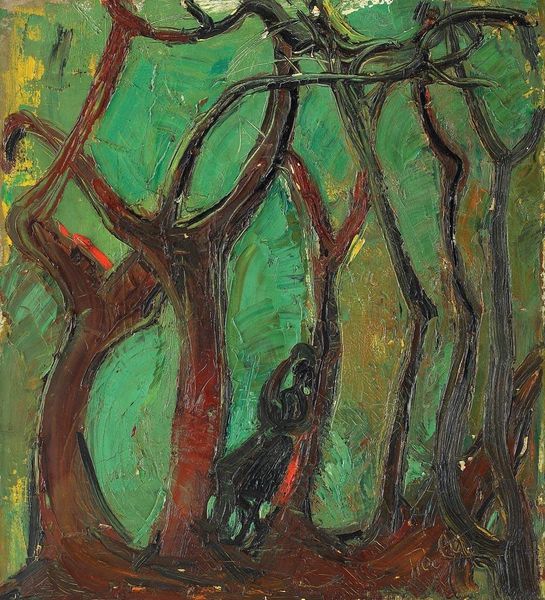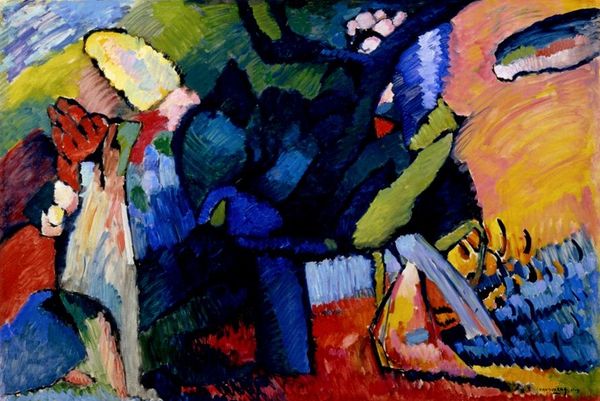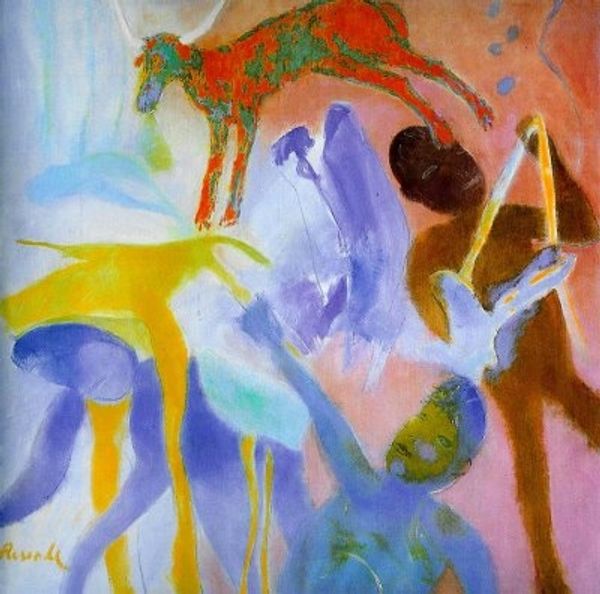
Copyright: Public domain US
David Burliuk painted "Woman with four eyes and hen" in 1912, using oil on canvas. Burliuk, a key figure in the Russian avant-garde, challenges traditional representation with his bold colors and fractured forms. Made during a period of intense artistic experimentation, this work reflects the influence of Cubism and Futurism. Note the woman's multiple eyes, a motif that suggests a dynamic, multifaceted view of reality, characteristic of the Futurists. The inclusion of the hen and horse evokes a connection to rural life and perhaps comments on the rapid industrialization of Russia. This image uses the visual language of the avant-garde to question established artistic norms and offer new ways of seeing the world. To fully understand the context of this artwork, researchers can delve into the history of early 20th-century Russian art, the writings of the Futurists, and the social and economic conditions that shaped the artistic production of this era.
Comments
No comments
Be the first to comment and join the conversation on the ultimate creative platform.
